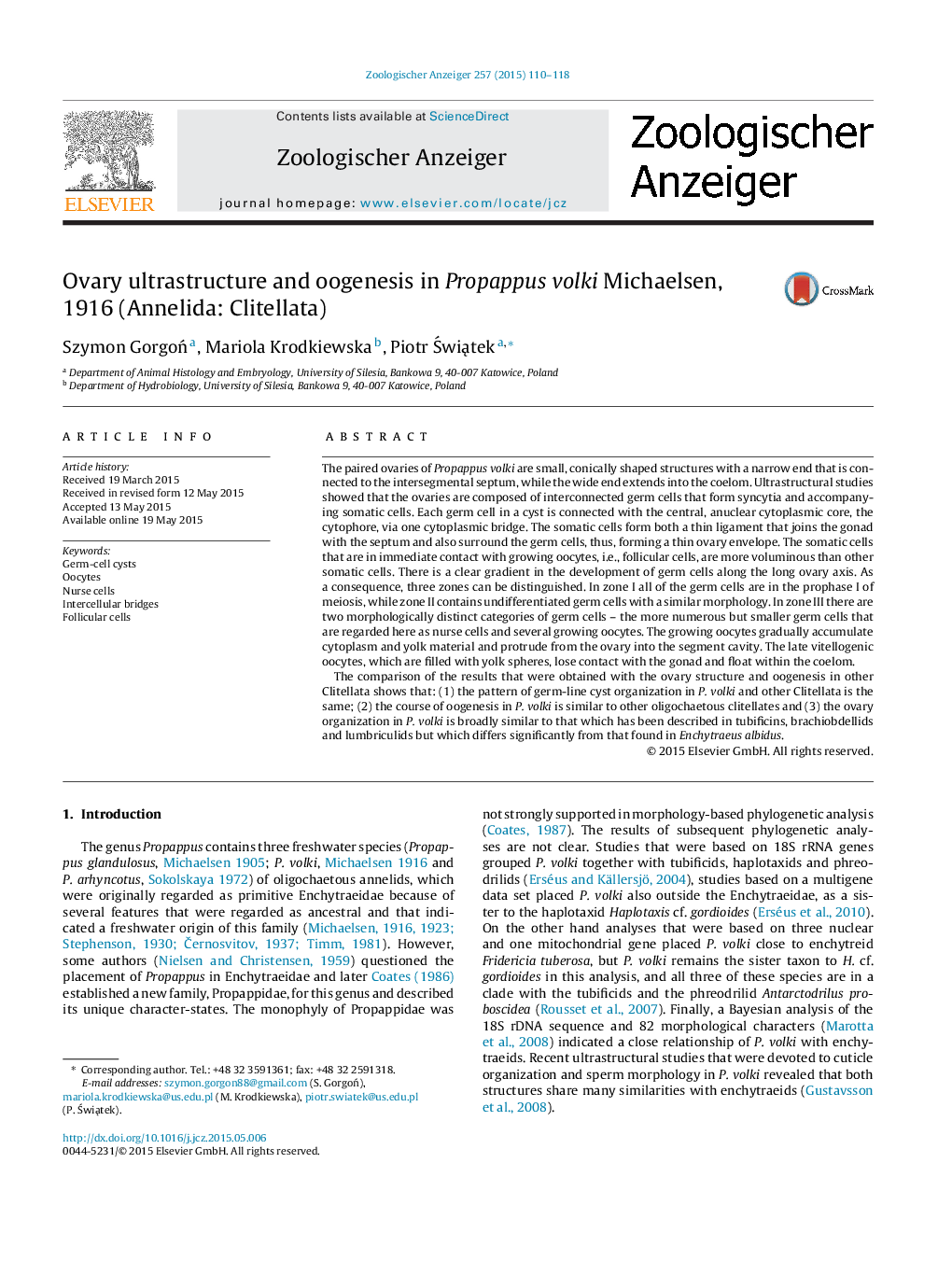| Article ID | Journal | Published Year | Pages | File Type |
|---|---|---|---|---|
| 2790559 | Zoologischer Anzeiger - A Journal of Comparative Zoology | 2015 | 9 Pages |
The paired ovaries of Propappus volki are small, conically shaped structures with a narrow end that is connected to the intersegmental septum, while the wide end extends into the coelom. Ultrastructural studies showed that the ovaries are composed of interconnected germ cells that form syncytia and accompanying somatic cells. Each germ cell in a cyst is connected with the central, anuclear cytoplasmic core, the cytophore, via one cytoplasmic bridge. The somatic cells form both a thin ligament that joins the gonad with the septum and also surround the germ cells, thus, forming a thin ovary envelope. The somatic cells that are in immediate contact with growing oocytes, i.e., follicular cells, are more voluminous than other somatic cells. There is a clear gradient in the development of germ cells along the long ovary axis. As a consequence, three zones can be distinguished. In zone I all of the germ cells are in the prophase I of meiosis, while zone II contains undifferentiated germ cells with a similar morphology. In zone III there are two morphologically distinct categories of germ cells – the more numerous but smaller germ cells that are regarded here as nurse cells and several growing oocytes. The growing oocytes gradually accumulate cytoplasm and yolk material and protrude from the ovary into the segment cavity. The late vitellogenic oocytes, which are filled with yolk spheres, lose contact with the gonad and float within the coelom.The comparison of the results that were obtained with the ovary structure and oogenesis in other Clitellata shows that: (1) the pattern of germ-line cyst organization in P. volki and other Clitellata is the same; (2) the course of oogenesis in P. volki is similar to other oligochaetous clitellates and (3) the ovary organization in P. volki is broadly similar to that which has been described in tubificins, brachiobdellids and lumbriculids but which differs significantly from that found in Enchytraeus albidus.
